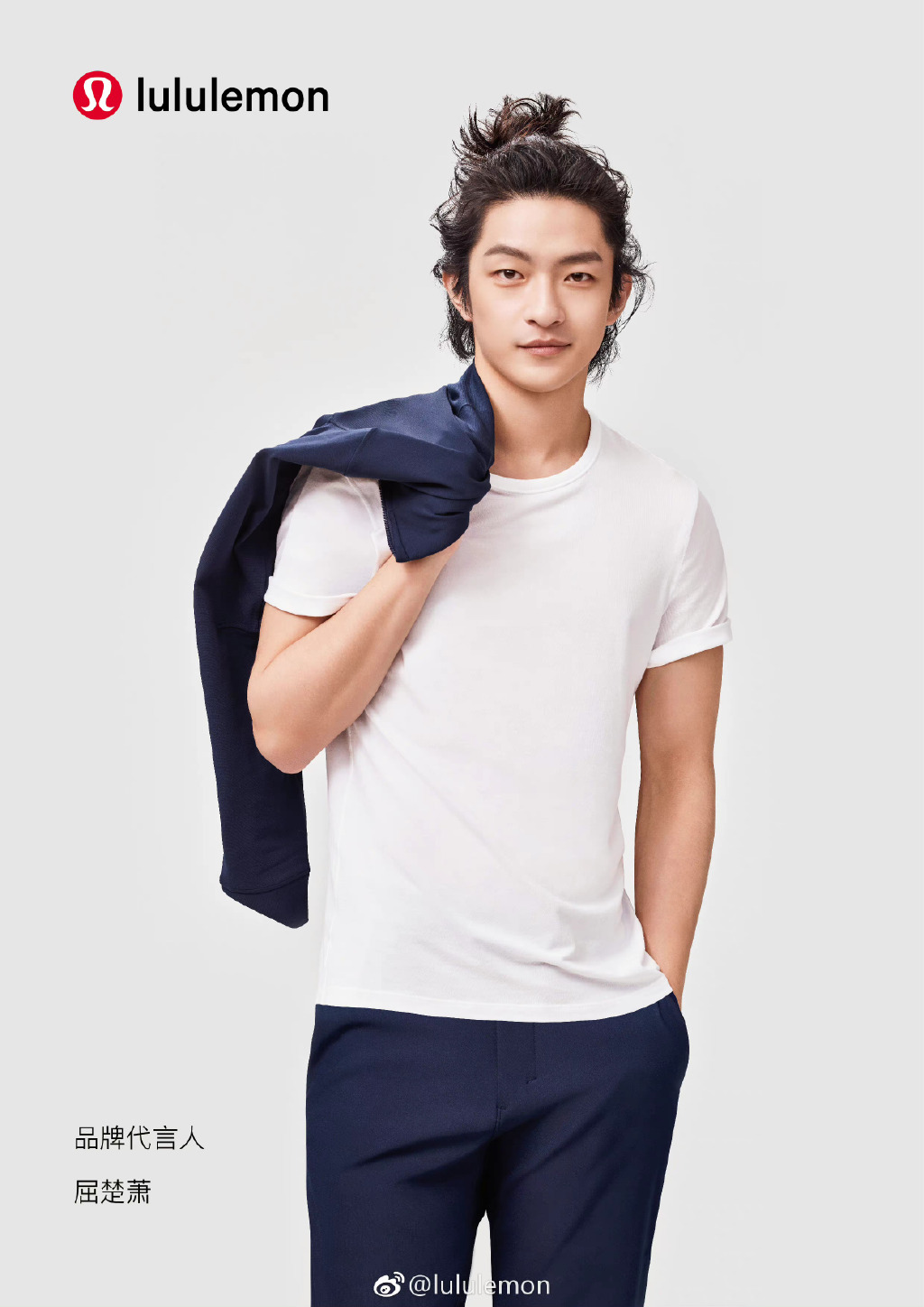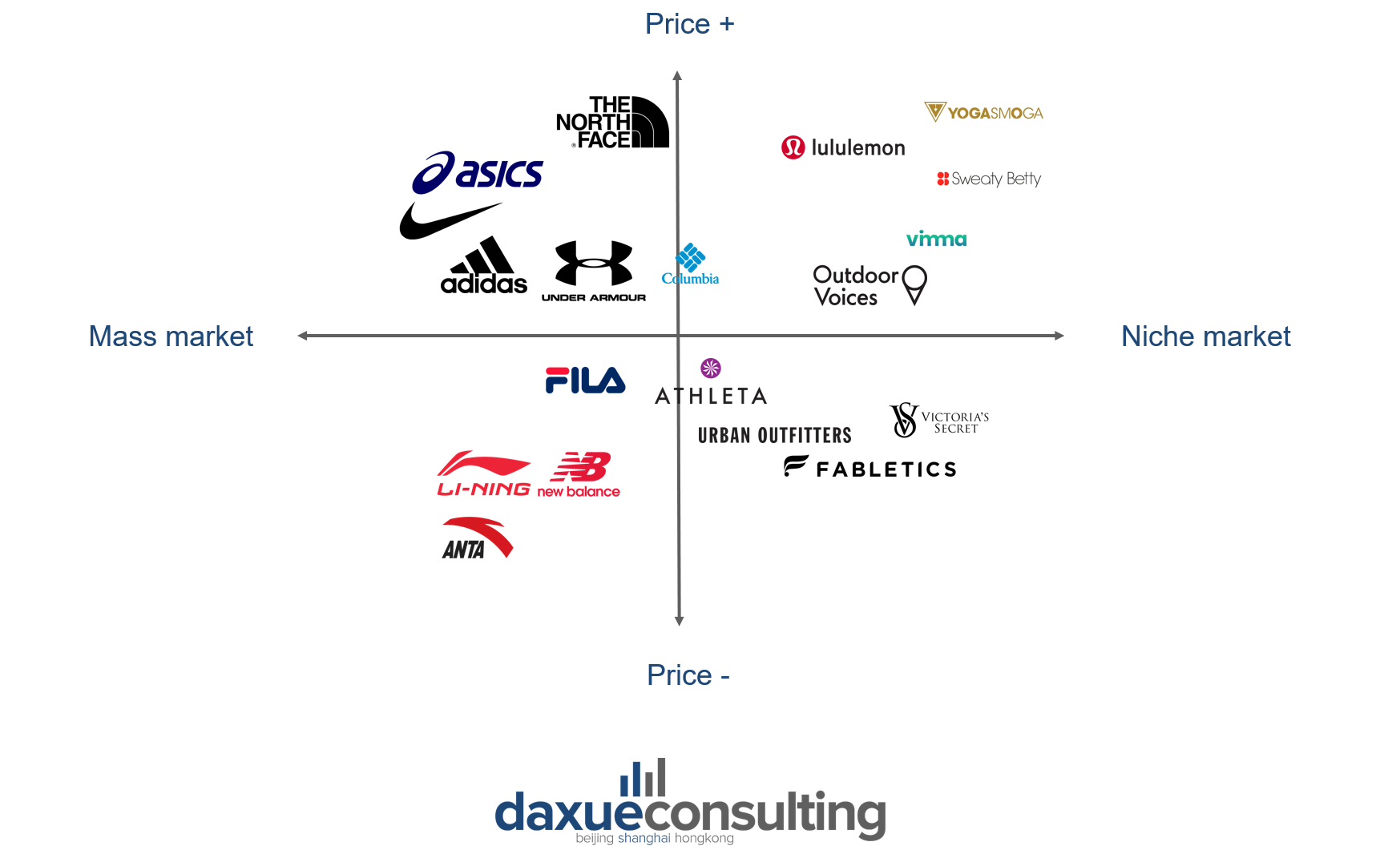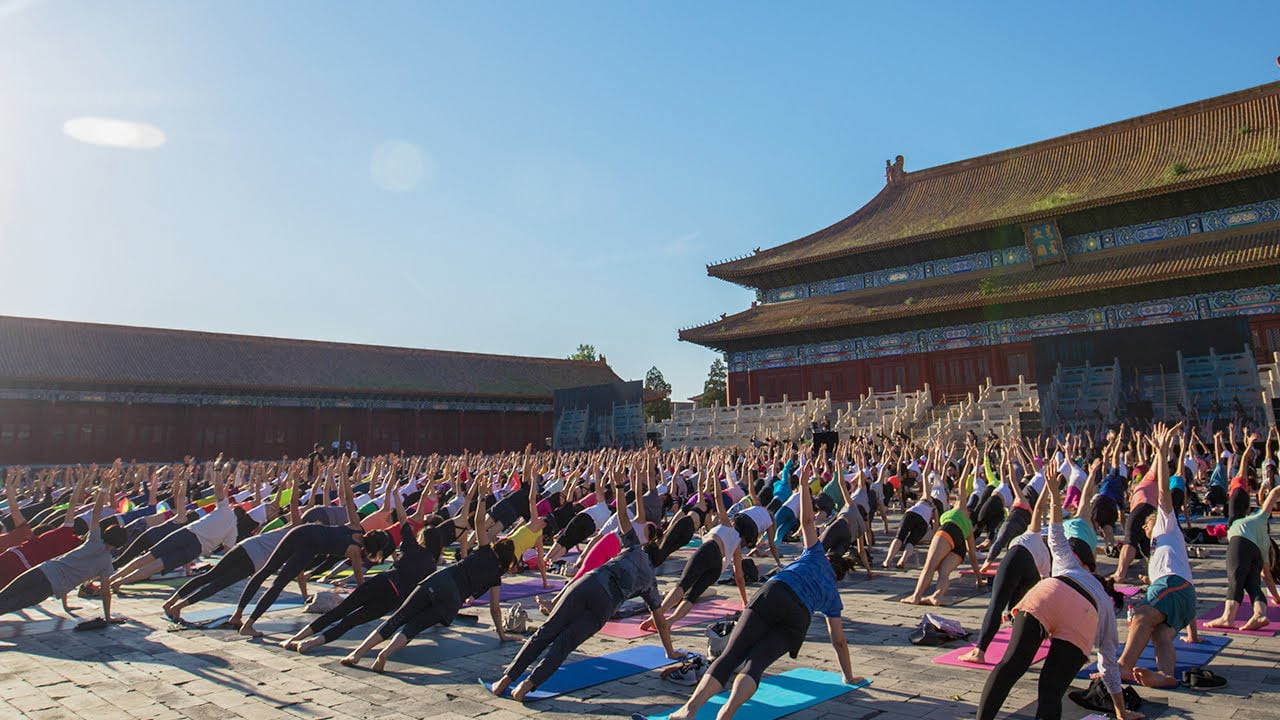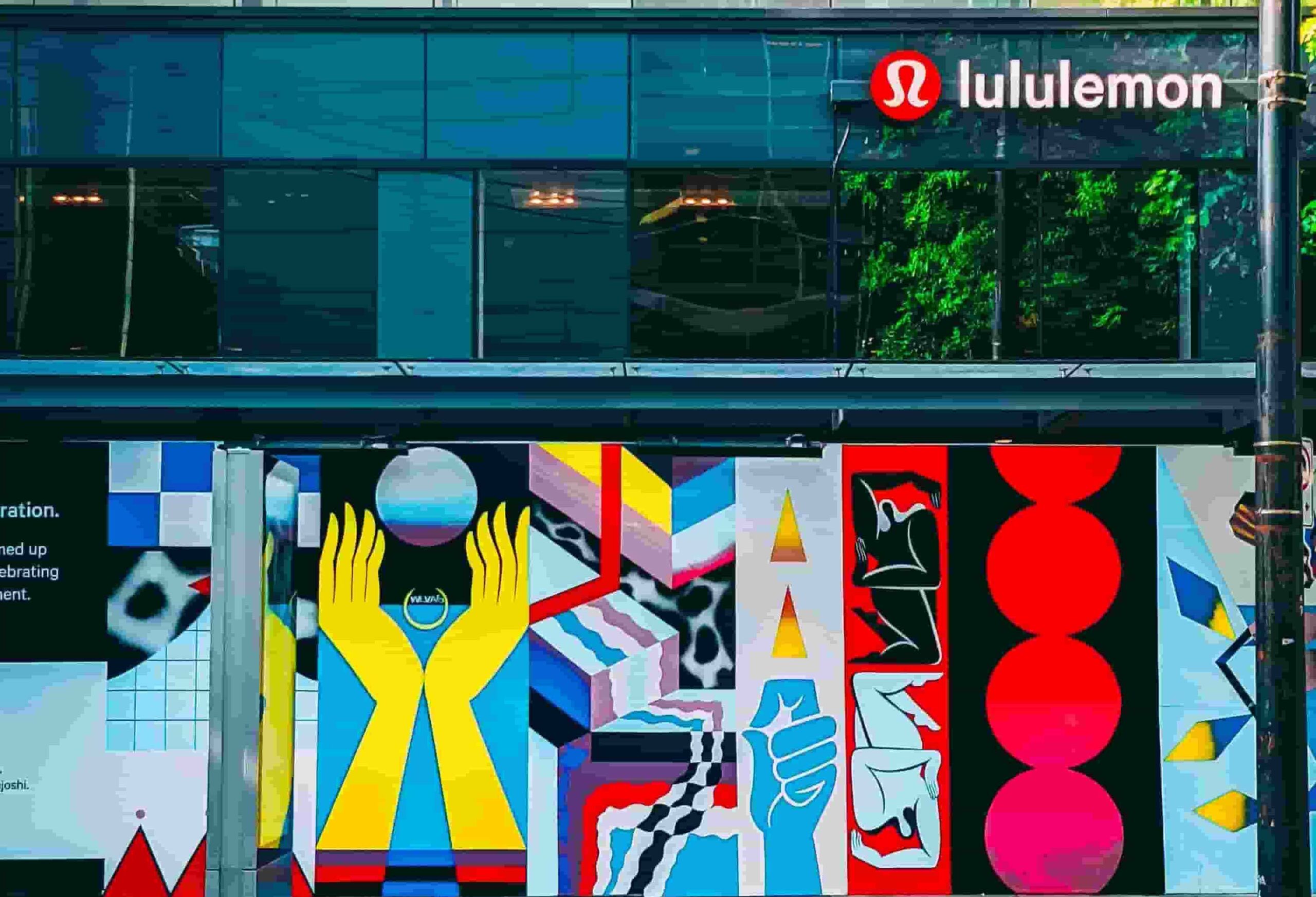Lululemon is a Canadian company founded in Vancouver in 1998. They started off as a small design studio of yoga clothing, but then gradually expanded to other sportswear sectors and are now a well-established company, that counts 600 stores in 17 different countries. As of 2021, North America is their largest market, representing 85% of their revenue, but the PRC is set to become its second.
In recent years, Lululemon in China has seen a rapid growth, also thanks to Chinese people’s new interest towards outdoor sports, like yoga or frisbee. It also has attracted a lot of attention from Asia market researchers for its peculiar marketing strategy.
Lululemon entered the Chinese market slowly
When the Canadian company entered the Chinese market in 2013, it did it slowly: they did not expect to immediately start selling their products, rather they first wanted to enhance brand awareness and let Chinese consumers know the uniqueness and potentiality of their brand, now labelled as “the Hermés of yoga”.
In order to do so, they first opened three showrooms in Beijing and Shanghai and chose strategically their Key Opinion Leaders (KOLs) among sport instructors. Then, they financed free classes of fitness, yoga and other sports like kick-boxing, all the while gathering new information about Chinese consumers and their habits. It is not until their partnership with Alibaba’s e-commerce platform Tmall in 2015 that Lululemon started selling their products in China, and only in 2016 did they open their first 3 stores.
Their business started carefully: Lululemon in China was known and recognised as a high-quality brand even before their official debut in the Chinese market.

How do they operate?
Lululemon retail chain operates on two channels: company-operated stores and direct to consumer online sales.
As of January 2021, the Canadian brand only had 55 stores in mainland China. Within a year and a half, on July 2022, 41 stores opened, making China their largest market in the world after the US.
Lululemon accused of racism and fraud
However, Lululemon in China has not failed to spark up a few controversies.
In April 2020, one of the company’s employees posted on Instagram the picture of a shirt design representing a bat fried rice. The image is a reference to coronavirus, thought to have originated from bats in the Chinese city Wuhan. The post was not available to Chinese netizens, who nevertheless found out about it and started a boycotting campaign on Weibo. The company publicly apologised and declared that the design was not part of their new collection, but was entirely the employee’s work.
More recently, in May 2022, the Canadian brand was fined RMB 81,420 (around USD 12,000) for selling defective products in their offline stores in Beijing. Additionally, they were also confiscated their illegal products and RMB 23,431.05 (around USD 3,400) of illegal income. Chinese people started an uproar on Weibo.
Despite all the controversies, Lululemon in the Chinese market is still strong and growing.
Lululemon’s marketing strategy: a combination of online and offline activities
In the sportswear market, Lululemon positioned itself as a high-quality brand that specialises in the yoga niche sector.
Lululemon marketing strategy revolves around the consumers’ experience of the product. They do not only sell sport clothes, but also promote a lifestyle all centred around health awareness and physical well-being. In China and worldwide, their concept “living a SweatLife” is repeatedly advertised by their chosen KOLs and during their organised offline activities. Lululemon is an experiential brand that aims at building the perception of a strong community, linked together by a common interest for a healthy lifestyle and by common values. Their motto “Be Well, Be Planet, and Be Human” gives off the idea of the brand’s core of values: health awareness, sustainability and healthy relationships within the community, which promote inclusion, connection, honesty and courage.

Encompassing all the above-mentioned brand values, “Unroll China” is the brand’s most successful offline event. It took place for the first time in 2016 in three of China’s most iconic locations: the Forbidden City in Beijing, the Central Green of Shanghai Lujiazui Financial Center and the Daci Temple at Chengdu Taikoo Li. The event in Beijing alone attracted over 5,000 participants.

Lululemon built its own WeChat Community
Lululemon has chosen “WeChat” (微信) as their main social media for communication with consumers. WeChat is a messaging app that in January 2022 ranked fifth among the most checked app in the world. Through the use of WeChat, users can discover more about the brand’s new products, offline activities -like yoga lessons- and can even book a spot for outdoor sport events, as well as easily make purchases through the WeChat shopping mall.
When new users sign up in the app, they receive a message saying “Welcome to the Lululemon community” and are offered a chance to get their exclusive membership.
Who are their target consumers?
As stated in their 2021 annual report, women account for 67% of the brand’s net revenue. Their target consumers are middle-to-high-income young and middle-aged women, but they are expanding in the man sportswear as well. Their intention is to double their Men’s business by 2026.
Why Lululemon is so popular in China
Consumer-oriented marketing strategy
Lululemon is not only a brand, it is a lifestyle. Its customers are encouraged to live the SweatLife it promotes and are immersed in its brand culture experience.
In many sectors of the market, Chinese people have proved themselves to be eager for experiences, and Lululemon is exactly an experiential brand that offers its consumers a sense of belonging to a community of kindred spirits and common goals.
Lululemon’s marketing strategy is unique and subtle, and it is probably the reason why the controversies the Canadian brand caused in China and worldwide did not stop its growth, but only slow it down.
Lululemon’s KOLs are sports influencers and instructors
Unlike its competitors, Lululemon does not rely on celebrities as their brand ambassadors, but instead chooses professionals in the sport field, like sport influencers and yoga instructors, who have direct face-to-face contacts with consumers in the yoga market.
This choice has revealed itself to be an optimal way to gain consumers’ trust. Since consumers train and exercise with their instructors, they look up to them as models to follow. If the instructor wears or speaks positively of the brand, the students will be more inclined to believe in their words.

Direct control over the experience of the product
The Canadian brand does not own manufacturing facilities but, as they state on their official webpage, they take extra-care in choosing suppliers who align with their values and check on their work regularly. In the PRC, they make use of third-parties warehouse services, but their wholesale and retail trade is left to their affiliated company Lululemon Athletica Trading (Shanghai) Co. Ldt.
Managing directly their retail sales allows them to have a strong control over the product and shape the consumer’s experience.
Who are Lululemon’s competitors?
The sportswear market in China generated USD 51.9 billion in 2021 and it is expected to grow at a Compound Annual Growth Rate (CAGR) of 9% by 2025. It is no wonder, then, that many brands are fiercely competing in the Chinese market to win over a share of this rich cake.
Lululemon is a niche brand, trying to expand into other small related business. Besides the yoga sector, it is working towards a specialisation in other sports clothes, like frisbee, skateboarding and cycling. Nevertheless, because of their products high price, their presence in the market is inevitably restricted to middle-class recipients.
Other brands dominate the sector, some of these being Adidas, Nike, Sketchers and the local brand Li Ning (李宁). Even clothing brands, like H&M or Urban Outfitters, that are not directly related to sportswear, are making their way into the market.
As the market is getting crowded, other brands are trying to attract consumers in Lululemon’s range of action. Brands like Anta (安踏), Li Ning, Particle Fanatic (粒子狂热) and MAIA ACTIVE have entered the yoga sportswear section one after the other and might represent a threat for the expensive Lululemon.
Key takeaways of Lululemon’s business in China:
- In 2013, Lululemon entered the Chinese market by opening three showrooms in Beijing and Shanghai, with the reason of spreading brand awareness within the local yoga communities and gather information about the yoga consumers.
- In 2015, they partnered with the e-commerce platform Tmall and in 2016 they opened their first three stores. Today, they have 96 stores in mainland China.
- The strategy of Lululemon in the Chinese market revolves around providing customers with a memorable experience. Not only do they want to promote their brand, but also their values and ideal lifestyle: “living a SweatLife”.
- Lululemon in China has established a small community through the organisation of online and offline events. One of their most successful offline events is “Unroll China”. In the 2016 edition, more than 5,000 people took part in their yoga class in Beijing Forbidden City.
- The Canadian brand’s main means of communication with consumers in China is WeChat.
- One of the reasons for success of Lululemon in the Chinese market is their KOLs choice. They tend to choose sport instructors or other famous sport influencers instead of celebrities.
- The brand has direct control over their products, making it for them easier to shape the consumer’s experience as they please.
- The sportswear market in China counts many brands and Lululemon is facing plenty of strong direct competitors.
Author: Chiara M. Barbera





